Contrary to stereotypes, settlements in the West Bank are mainly suburban localities inhabited by “quality of life” settlers.
The presence of Israeli settlements in the West Bank represents one of the main issues concerning Israeli-Palestinian relations. Still, perhaps because of their exposure, academic and media discourse on settlements is rather one-dimensional in its focus on their role as “obstacles to peace.”
Indeed, Israeli settlements repeatedly prove to be an intractable problem for international diplomacy. However, a more nuanced understanding of Israel’s settlement policy is needed to acknowledge the “banality of colonization” as a fundamental driver in the dynamics of settlement expansion and in the transformation of the Israeli-Palestinian conflict.
Settlers As We Know Them
Settlers who populate newspaper headlines are a bunch of bearded, armed, national-religious radicals who moved to the West Bank to make a political and messianic statement over the ownership of the Land of Israel. Unsurprisingly, their communities represent the points of friction par excellence with the Palestinian population. Not only are these settlers heavily armed and prone to violence against Palestinians, they also consciously act as Jewish pioneers in the West Bank, either by creating small outposts surrounded by Arabs or by infiltrating the heart of predominantly Palestinian urban areas.
In the same vein, Israel’s settlement policy is described in terms of a “planning war” for the conquest of the land. The relationship between the Israeli state and settlers is understood as a symbiotic connection; although the exact nature of this link is often debated and described in terms of either (mutual) manipulation or outright complicity. In this respect, Israel’s settlement policy is perceived as nothing else than the continuation of a century-long colonial enterprise that started at the end of 19th century with the first Zionist immigrants.
Of course, settlements are “obstacles to peace” — part and parcel — along with other so-called “final status issues”: borders, Jerusalem and refugees, among others in a huge file marked the “Israeli-Palestinian conflict,” which has been sitting on the desk of diplomats and foreign ministries for at least 60 years.
In this respect, the existence of Jewish communities in the West Bank is widely seen as a major obstacle for confidence-building between the two sides, as well as for the implementation of the “two state solution.”
Israeli Settlements: The Banality of Colonization
As it is often the case with stereotypes, there is a lot of truth in this description of Jewish settlements: Many settlers have strong and even extreme nationalistic views, often paired with religious and messianic connotations. Such views inevitably belittle or negate altogether Palestinian rights to the land, while some settlers regularly engage in “price-tag” campaigns by physically assaulting Palestinians and vandalizing or destroying their properties. In many situations, they provoke Palestinians by establishing their communities in sensitive and symbolic locations — this is the case, for example, in Hebron, the Old City of Jerusalem and the surrounding neighborhoods of Silwan and Sheik Jarrah.
Since 1967, Israeli politicians, strategists and ideologues put forward a number of different ambitious blueprints for the colonization of territories. Many of them outlined settlement patterns that were radically different from the model of suburban colonization.
There is no doubt whatsoever that planning in the West Bank is a partisan enterprise. The Israeli-controlled planning system favors the Jewish population over the Palestinians, to the point of tolerating or encouraging illegal actions by settler groups. Finally, the history of Israeli-Palestinian negotiations certainly proves that settlements are a wicked problem, one in which countless diplomatic initiatives have floundered over the years.
Still, as is also often the case with stereotypes, this description of Israel’s settlement policy is especially significant not in what it shows, but rather in what it hides. The point here is the state’s policy contributes to obscure one of the main drivers in the proliferation of settlements and the transformation of the spatial and political landscape in the conflict — namely, the “banality of colonization” inherent to the metropolitan character of Israel’s settlement policy.
A Nice Place to Live: Settling the Suburbia
The stereotyped image of settlers first becomes problematic when we place it against some data. In 2007, the Israeli nongovernmental organization Peace Now released a survey investigating settler motivations for choosing the West Bank as their place of residence: 77% of respondents cited quality of life factors as the primary reason. But why would any Israeli looking for a better life move to a caravan placed on a barren hill surrounded by hostile Palestinian communities?
It turns out this is not the case. The overwhelming majority of settlers live in the area of metropolitan Jerusalem — between two-thirds and 80%, depending on the definition of the area. This, however, does not include a few other communities gravitating to Tel Aviv in the north of the West Bank.
If we consider the localities with a population of over 5,000 inhabitants, we find among them nine “new neighborhoods” of Jerusalem (settlements established in East Jerusalem, within the Israeli-defined municipal boundaries of the city). There are also five autonomous municipalities, including Ma’ale Adummim, Giva’at Ze’ev, Efrata, Betar Illit, Modi’in Illit, located just outside the city limits, between five and ten kilometers from the Green Line. In 2012, the population of these 14 settlements alone reached approximately 350,000 people out of a total population of about 550,000.
In other words, and contrary to the stereotype that usually makes the headlines, we could say the typical settlement is a relatively large community, with fully functioning municipal services and good infrastructures connecting it to the main employment centers of the region. Its resident population is made up of “settler-consumers,” who moved to a Jewish settlement for financial and logistic reasons, namely to find good housing opportunities at reasonable prices and escape the overcrowding of Jerusalem and Tel Aviv.
These settlements often constitute segregated and even gated communities. It is difficult to say, however, to what extent the creation of these “safe spaces” relates to the pressure of the conflict with Palestinians, and to what extent it represents for the residents a more general antidote to various forms of “unpleasant otherness” — in the form of intra-Jewish tensions, as well as of poverty, crime and abusive behavior.
The Metropolitanization of Israeli Settlements Policy
The metropolitan character that Israel’s settlement policy has assumed over the years is also significant due to what it reveals about the underlying policy process. Suburban settlements could not have been created without active support from the Israeli state. If the establishment of small, pioneering communities points to the symbiosis between the state and settler movement, new towns such as Ma’ale Adummim or Pisgat Ze’ev constitute straightforward examples of large-scale and direct state intervention in the metropolitan area of Jerusalem. At the same time, the process of metropolitanization of Israeli settlements policy demonstrates that politics and ideology alone would not have been sufficient to ensure the proliferation of settlements.
Since 1967, Israeli politicians, strategists and ideologues put forward a number of different ambitious blueprints for the colonization of territories. Many of them outlined settlement patterns that were radically different from the model of suburban colonization. The Israeli Labor Party believed settlement policy should have focused on the creation of agricultural communities in the Jordan Valley region. National-religious organizations and right-wing politicians, including Ariel Sharon, favored the establishment of more “ideological” settlements. The goal here was to break the continuity of a Palestinian West Bank, creating irreversible facts on the ground that would tie the hands of any future Israeli government.
After almost 50 years, we can conclude that both models of colonization have produced relatively scarce territorial-demographic results, if compared with the thriving bedroom communities that surround Jerusalem. In other words — and despite the huge resources mobilized to this end — the prevailing settlement pattern proves that Israeli governments and Zionist agencies have been largely unable to push settlers outside the metropolitan belts of Jerusalem and Tel Aviv. This has been to such an extent that, as Rafi Segal and Eyal Weizman put it, “architecture replaces human presence” in many settlements of the West Bank.
On the other side, the metropolitan area of Jerusalem functioned as a political-territorial common denominator for the convergence of preferences for many Israeli actors, including politicians of different orientations and backgrounds, bureaucrats and planners, real estate agents and developers, and a wide audience of potential “settler-consumers.”
Thus, while the presence of a few hundred Jewish settlers in Hebron remains problematic for a large part of the Israeli public, the construction of a new town with a potential of 10,000 housing units in Ma’ale Adummim was widely perceived as an uncontroversial move, due of its embeddedness in the metropolitan fabric. Politicians saw it as a territorial and demographic fact on the ground in a crucial area of the country. Strategists could approvingly consider its role as an “eastern shield” of the capital, overlooking the road to the Jordanian border. Moreover, bureaucrats in the Israeli Ministry of Housing were satisfied with the opportunity it offered for an efficient delivery of infrastructure and services. Planners saw it as the rational answer to the needs of the expanding population in the city. Middle-class Jerusalemites found good housing opportunities there at an affordable price, while developers and real estate agents were ready to take advantage of the huge business opportunities it came to represent.
In other words, the success of suburban settlements is ultimately due to the existence of different demands and preferences that found a common political-territorial platform in the metropolitan area of Jerusalem. This provided a relatively non-controversial model of colonization and facilitated the steady growth of the settler population.
The Demise of the Two-State Solution
The political consequences of the metropolitanization of Israel’s settlement policy, beyond its mere quantitative dimension, are huge and can hardly be discussed here. Still, it is evident that the “banality of colonization,” as embodied in the experience of settler-consumers has been a major force in transforming the geography of Israeli-Palestinian relations. This has meant an overall redefinition in the very idea of what “Jerusalem” is and the progressive disappearance of the pre-1967 border.
It seems that politics still struggles to come to terms with the reality on the ground. Considering settlements as “obstacles” on the road leading to a two-state solution means assuming that “Israel” and the “West Bank” still exist as entities that can be separated through a partition agreement.
It is not by chance, for example, that the issue of the so-called “settlement freeze” has been largely relegated over the last few years to the role of (temporary) confidence-building measures. Or rather that the conventional wisdom over Jerusalem focuses on the status of the Old City and its immediate surroundings, instead of the more intricate bundle of territorial and demographic issues at a metropolitan level.
A recurring mantra of peacemaking in Israel and Palestine is that the expansion of settlements could reach a “point of no return,” beyond which implementing a two-state solution would be impossible. Indeed, looking at the present reality in light of the decades-long process of settlements expansion seems to suggest that such a threshold was passed a long time ago. Switching to a post-border approach to the Israeli-Palestinian conflict might be urgently needed.
The views expressed in this article are the author’s own and do not necessarily reflect Fair Observer’s editorial policy.
Support Fair Observer
We rely on your support for our independence, diversity and quality.
For more than 10 years, Fair Observer has been free, fair and independent. No billionaire owns us, no advertisers control us. We are a reader-supported nonprofit. Unlike many other publications, we keep our content free for readers regardless of where they live or whether they can afford to pay. We have no paywalls and no ads.
In the post-truth era of fake news, echo chambers and filter bubbles, we publish a plurality of perspectives from around the world. Anyone can publish with us, but everyone goes through a rigorous editorial process. So, you get fact-checked, well-reasoned content instead of noise.
We publish 2,500+ voices from 90+ countries. We also conduct education and training programs
on subjects ranging from digital media and journalism to writing and critical thinking. This
doesn’t come cheap. Servers, editors, trainers and web developers cost
money.
Please consider supporting us on a regular basis as a recurring donor or a
sustaining member.
Will you support FO’s journalism?
We rely on your support for our independence, diversity and quality.




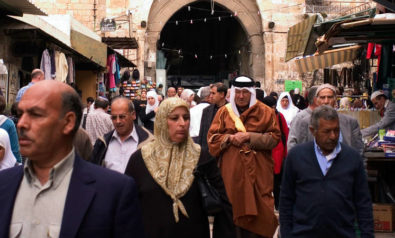
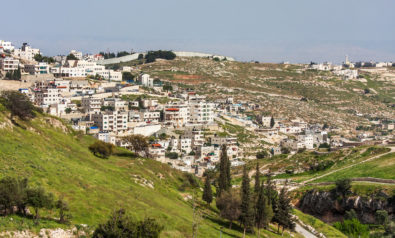
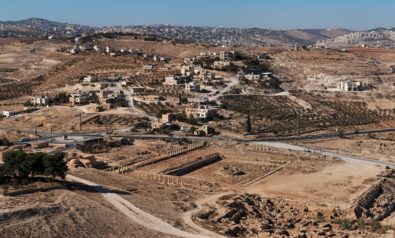
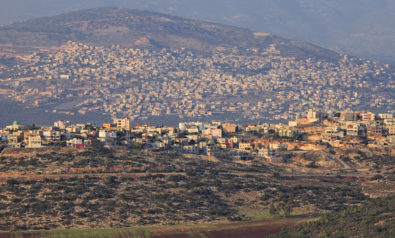
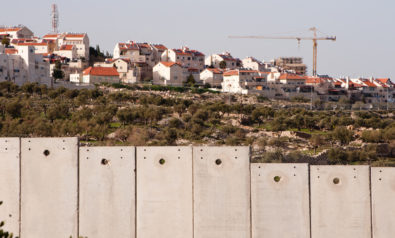
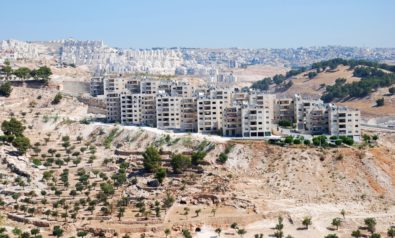

Comment